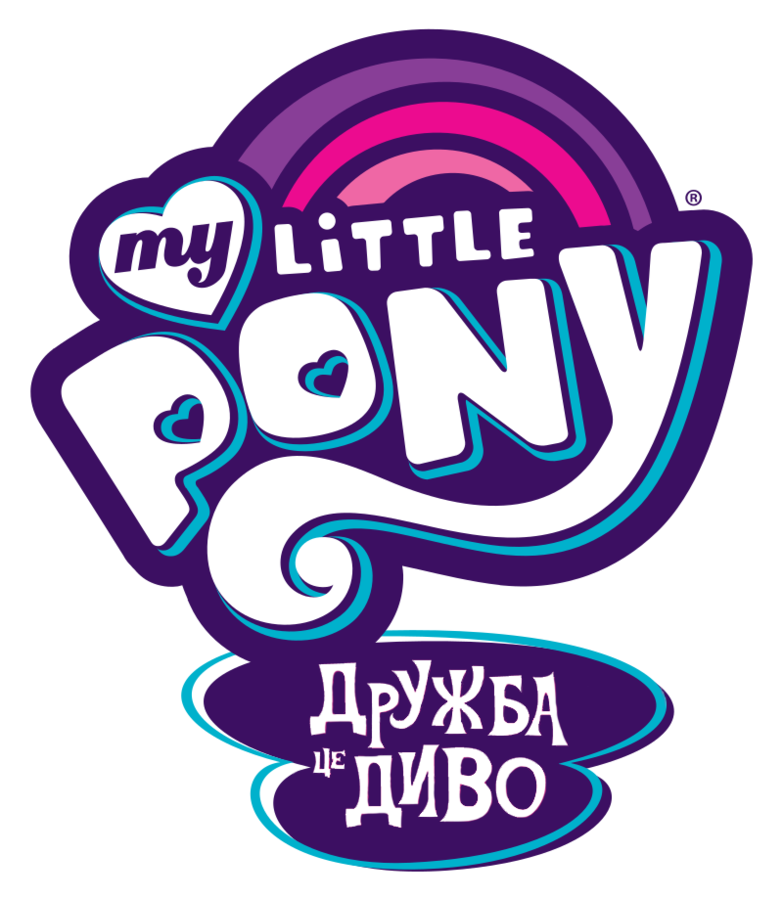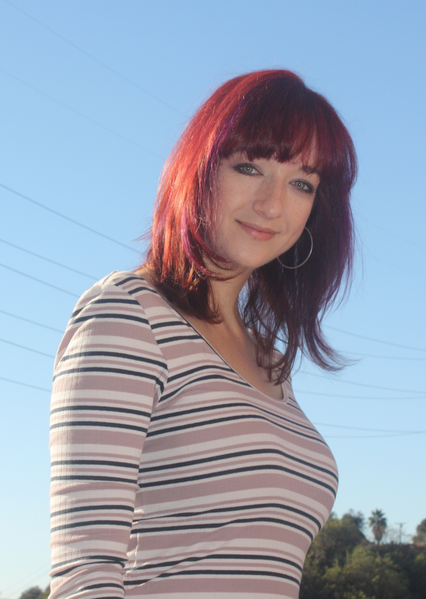Title of the work
Studio / Production Company
Country of the First Edition
Country/countries of popularity
Original Language
First Edition Date
First Edition Details
Friendship is Magic – Part 2 (Elements of Harmony). Directed by Jayson Thiessen, James Wootton (co-director). Script by Lauren Faust. Hasbro Studios, October 22, 2010, 23 min.
Running time
Format
Date of the First DVD or VHS
Official Website
mylittlepony.hasbro.com (accessed: January 7, 2020)
Available Onllne
On Netflix – 6 seasons (accessed: January 7, 2020),
On Amazon Prime (accessed: January 7, 2020),
On iTunes (accessed: January 7, 2020).
Awards
No major wins – all accomplishments are listed under this link on IMDB (accessed: January 7, 2020).
Genre
Animated films
Television series
Target Audience
Crossover (Children)
Cover

My Little Pony: Friendship Is Magic, Ukrainian Logo by Hasbro, 2017. Retrieved from Wikipedia, licensed under CC BY-SA 4.0 (accessed: January 26, 2022).
Author of the Entry:
Anna Mik, University of Warsaw, anna.m.mik@gmail.com
Peer-reviewer of the Entry:
Elżbieta Olechowska, University of Warsaw, elzbieta.olechowska@gmail.com
Elizabeth Hale, University of New England, ehale@une.edu.au

Lauren Faust, photographed by Rfaust76 on July 1, 2014 (accessed: January 7, 2020). The file is licensed under the Creative Commons Attribution-Share Alike.
Lauren Faust
, b. 1974
(Animator, Producer)
Lauren Faust is the creator of: My Little Pony: Friendship is Magic, a TV-series primarily for children, broadcast in 2011-2019, produced by Hasbro. She also has worked for the Cartoon Network Studios in the production of: The Powerpuff Girls (her husband, Craig McCracken, is the creator of this series) and for Warner Bros (she is responsible for the reboot of: DC Super Hero Girls). Her philosophical outlook could be described as feminist (as she states herself on social media and in various interviews).
Bio prepared by Anna Mik, University of Warsaw, anna.m.mik@gmail.com
Casting
Twilight Sparkle – Tara Strong,
Applejack/Rainbow Dash – Ashleigh Ball,
Pinkie Pie/Fluttershy – Andrea Libman,
Rarity/Nighmare Moon/Princess Luna – Tabitha St. Germain,
Spike/Mayor Mare – Cathy Weseluck,
Princess Celestia – Nicole Oliver.
Adaptations
This is a TV series, with multiple spin-off movies which all together accompany toys called “My Little Pony” produced by Habro; a similar phenomenon of cross-promotion occurs also in case of Monster High (toys are accompanied by a TV series which reinforces popularity and sales of the toys).
Sequels, Prequels and Spin-offs
Previous episode: Friendship is Magic: Part 1 (Elements of Harmony).
Next episode: The Ticket Master.
Summary
Summary of the Series :
My Little Pony: Friendship is Magic tells the story of a group of ponies, living in Ponyville, in a magical land of Equestria that resembles a glittery paradise. The ponies are all female, they behave like young girls, who value friendship above all things. There are several types of ponies: some resemble the "real" horses, some are unicorns, some others are Pegasi. It is a matriarchal society ruled by Princess Celestia, a supreme unicorn/Pegasus, seemingly older than the rest. Along with her sister, Princess Luna, Celestia provides the balance and harmony in Equestria, which if disturbed, can always be saved by her apprentice – Twilight Sparkle – and by a group of her faithful friends. Classical antiquity is present in the series, mainly due to various mythical creatures that appear on multiple occasions.
Summary of the Episode:
Friendship is Magic, Part 2 (Elements of Harmony) is a continuation of the pilot episode of the My Little Pony series created by Lauren Faust. It introduces all the characters and shows the beginnings of their long-lasting friendship and magic that comes with it. Twilight Sparkle (the main protagonist) and her friends set off on a journey to find the eponymous Elements of Harmony in order to save their ruler – Princess Celestia – and the whole kingdom of Equestria from the Darkness. They are all under threat from Nightmare Moon – a long lost evil pony, who wants to bring the eternal night to their home. At the end, the ponies discover that the sixth element of the magical combination (next to: Honesty, Kindness, Laughter, Generosity and Loyalty) that can save them all is friendship "triggering" the Magic. All six elements are a set of core values, which seems a highly moralistic approach.
On their way to the place where Elements of Harmony are hidden, the ponies meet Manticore: a monster inspired by Greek mythology. In the episode Manticore does not have human traits (besides the spin-off movies, humans do not appear in this universe): it is a monster with the body of a lion, wings of a bat, and the tail of a scorpion. At first, aggressive and violent, it seems poised to attack the ponies. The girls defend themselves trying to fight Manticore, however – not effectively. Only Fluttershy, a shy pony who loves other varieties of magical creatures, sees what really bothers the "monster" – a thorn stuck in its paw. She calms Manticore, takes out the thorn, and suddenly the creature turns into: “a little old baby kitty.” As Fluttershy points to the moral of the event: “Sometimes we all just need to be shown a little kindness.” The ponies continue their journey and Manticore is left in peace.
Analysis
The world of Equestria has legendary or mythical qualities – not only because of the magic present in this universe but also because of stories collected in the big library where Twilight Sparkle spends most of her days. These stories are inspired by various traditions – including classical mythology Manticore comes from. In Greek mythology it “was a man-eating, Persian monster with the body of a lion, the face of a man, and a spike-tipped, arrow-shooting tail” (Theoi: online, accessed: January 7, 2020).
At first Manticore appears to be a monster – simply a danger to the innocent and appealing ponies. It poses a threat not only because of its violent behavior but also of its appearance – its body is darker, less "shiny" (the ponies shine as if covered in glitter) and less "cute" (it has small eyes, big claws and teeth). However, the message shared by the authors is that looks and first impressions might be deceiving. Fluttershy demonstrates that kindness might be the key to solving a lot of conflicts, especially those based on superstitions. Manticore, being (traditionally) a monster, in the world of My Little Pony becomes a cute animal, a pet, non-threatening to those who understand it. This approach brings to mind a popular trend in presenting magical creatures (also those inspired by classical mythology) – dominant for instance in Fantastic Beasts and Where to Find Them, both the book (2001, by J. K. Rowling) and the movie (2016, dir. D. Yates) – entries for both are available in Our Mythical Survey. The depiction of Manticore reflects a general tendency present in the contemporary works for the youngest, where monsters, traditionally perceived as a threat, become friends and allies of the main characters. Also, this story might remind us of the tale of Androcles and the Lion (after Androcles took out the thorn from Lion’s paw the animal became tamed) – which also embodies the values of kindness and human–animal cooperation. Classical mythology becomes a part of Equestria’s cultural heritage and antiquity, as one of the motifs, becomes a universal cultural code.
Further Reading
Entry: “Manticore” on Theoi.com, available at theoi.com (accessed: January 7, 2020).
Marrone, Gianfranco; Mangano, Dario, Semiotics of Animals in Culture: Zoosemiotics 2.0, Cham: Springer, 2018.
Slany, Katarzyna, Groza w literaturze dziecięcej. Od Grimmów do Gaimana [“Horror in Children’s Literature. From Grimms to Gaiman”], Kraków: Wydawnictwo Naukowe Uniwersytetu Pedagogicznego, 2014.
Warner, Marina, Monsters of Our Own Making: The Peculiar Pleasures of Fear, Lexington: Univeristy Press of Kentucky, 1998.
Addenda
The series proved to be very popular among teenagers and adults as well: fans call themselves: “bronies”; because of this popularity, it appears to reach a crossover audience.
Translations: Multi-language soundtrack.


